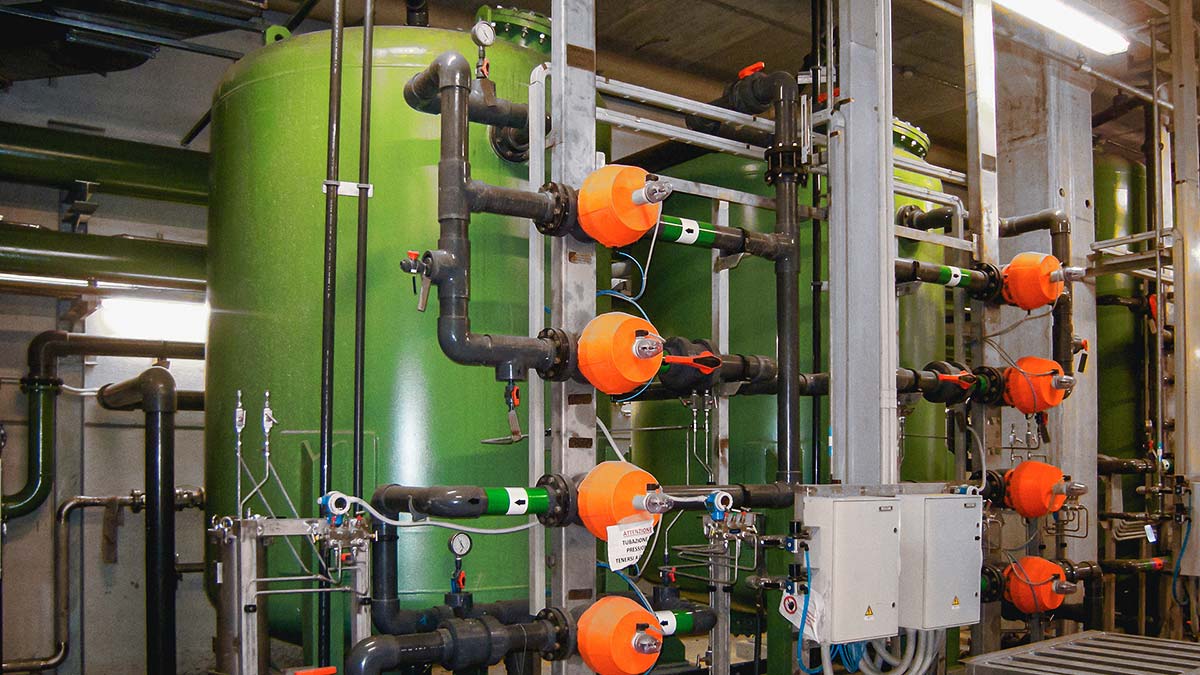
Activated Carbon Adsorption
The process of Adsorption by activated carbon, or filtration by activated carbon, allows the removal of certain substances within the stream to be purified, such as certain types of ions.
In water treatment plants this is done through granular activated carbon.
The removal oforganic molecules is accomplished by passing the flow of water over a bed of this material, employed with an inner surface area of 500 to 1500 m2/g
For example, activated carbon is used in groundwater purification, dechlorination ofprocess water, and final polishing of wastewater.

How Does Adsorption by Activated Carbon Work
The soluble matters that are separated by this treatment are pollutants of different kinds.
- Non-polar organic substances
such as Polycyclic Aromatic Compounds, Volatile Organic Compounds, - Halogens
such as Iodine, Bromine, Chlorine, Fluorine
In addition to these, water treatment makes it possible to cancel out odor, taste and fermentation products.
With this type of system, the water, conveyed to the activated carbon column, releases the solutes.
The flow in the column creates an accumulation of pollutants, which induces filter replacement or regeneration, which can be done by backwashing and washing.
Alternatively following analytical surveys, extraction and subsequent replacement can be performed.
It is possible to have columns placed in parallel with each other; one backing up to the other: in this way the system can work continuously, avoiding interruptions during the regeneration phase.
Water temperature, polarity, and soluble concentration affect treatment and are ascertained and weighed in the design phase.
Coind Activated Carbon Adsorption plants can be automated, using pneumatic valves that allow the management and regulation of water flow movements.

